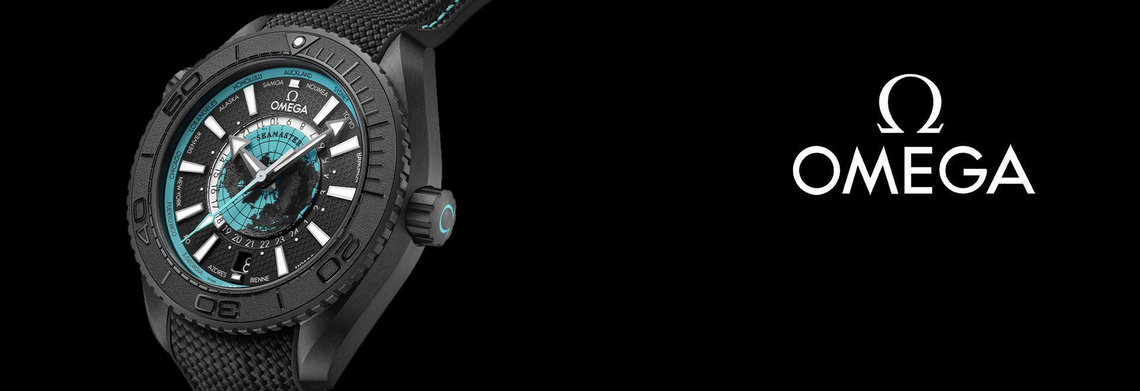
A Masterpiece In Three Materials
A Masterpiece In Three Materials
Introducing OMEGA’s Seamaster Diver 300M Chronograph: a striking blend of gold, titanium and tantalum.
When tantalum made its OMEGA debut in 1993, it quickly earned a unique place in the Seamaster’s design history. This year, the lustrous material is making a stylish comeback. Its distinctive blue/grey tones offering a subtle contrast to the precious metals featured prominently on OMEGA’s latest dive watch.
OMEGA’s 44 mm Master Chronometer is a Numbered Edition, made from grade 2 titanium, 18K Sedna™ gold and tantalum - found on the base of the bezel and the middle links of the bracelet.
The 18K Sedna™ gold bezel ring features a laser-ablated diving scale, while the polished blue ceramic [ZrO2] dial sports laser-engraved waves, a date window at 6 o’clock, and subdial rings with touches of 18K Sedna™ gold. On the side of the case is an 18K Sedna™ gold plate engraved with the watch’s unique number.
Turning the watch over reveals an OMEGA Seahorse, which has been laser-engraved and white lacquered on the sapphire crystal. Through the glass, there is a clear view of the OMEGA Co-Axial Master Chronometer Calibre 9900, certified by the Swiss Federal Institute of Metrology (METAS).
For ocean adventurers, each bracelet includes OMEGA’s patented extendable foldover rack-and-pusher with extra diver extension. The timepiece is water-resistant up to 30 bar (300 m / 1000 ft.) and offered inside a special presentation box in the style of a water-resistant chamber.
A closer look at the materials
Grade 2 Titanium: Discovered in 1794, titanium’s industrialised process only dates back to 1939. Although reasonably common, it remains an expensive metal due to the difficulty linked with its dissociation process from other terrestrial materials. Titanium alloys are light, extraordinarily corrosion resistant, biochemically inert and able to withstand extreme temperatures. Grade 2 titanium is in fact heat-treatable, which means it gains additional strength via the heat-treatment process, making it perfect for moving parts in challenging environments. OMEGA has made use of grade 2 titanium many times in its watchmaking history, on watches such as the Speedmaster X33 - and of course – earlier editions of the Seamaster Diver 300M.
Tantalum: Tantalum is a lustrous blue-grey metal that is more rare than gold, harder than steel, and highly corrosion-resistant. Its inertness makes it a valuable alternative to platinum. Dark, dense, pliable, and highly conductive of heat and electricity, it is particularly difficult to work with, adding to its rare use within the watch industry. Its name comes from an ancient story in Greek Mythology, in which Tantalus, forced to stand in knee-high water as a punishment, could not drink or reach the fruit above him. This mirrors the attributes of the metal, which cannot absorb acid when immersed. This resistance gives the metal an added robustness and attraction.
18K Sedna™ gold: In its on-going desire to improve the quality of its products, OMEGA wanted to find a new rose/red 18K gold alloy that would be more resistant to discoloration than the standard 18K red gold used in watchmaking. In 2013, the brand reached its goal. The material dubbed 18 Sedna™ gold achieved a beautiful red colour and turned out to have an incredible resistance to discoloration. OMEGA’s own rose gold is an alloy blended from gold (at least 75%), copper for colour and palladium for stability. The result is a unique reddish tone that is warm and particularly long lasting. The unique 18K gold takes its name from Sedna, an orbiting dwarf planet described as one of the reddest in the solar system.
(Images by OMEGA Watches)

